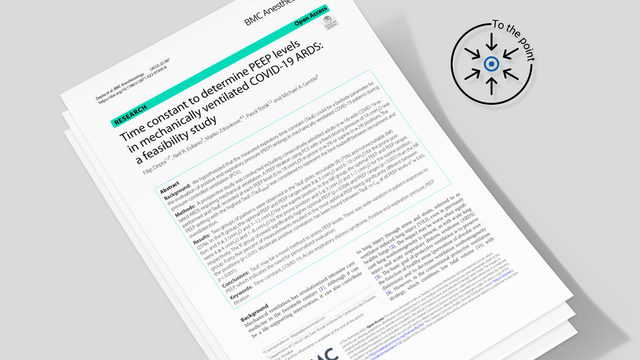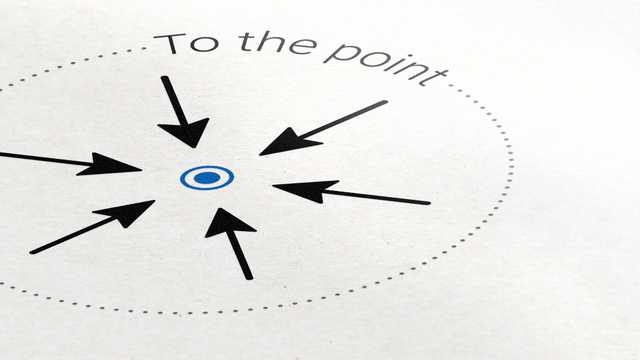
Autor: Aakash Soni
Datum: 04.04.2024
The authors' point? Using the expiratory time constant instead of inspiratory parameters holds promise as an approach for personalized PEEP titration in patients with ARDS.

What is the clinical utility of assessing optimal positive end-expiratory pressure (PEEP) levels using the expiratory time constant (RCexp) as compared to traditional methods based on respiratory system compliance (CRS) in terms of balancing alveolar recruitment and preventing overdistension in patients with nonhomogeneous lungs?
Prospective observational investigation conducted in a tertiary teaching hospital, involving 16 COVID-19 ARDS patients who were assessed for moderate-to-severe ARDS as per the Berlin definition. The research aimed to determine lung recruitability patterns by analysing RCexp measurements during PEEP titrations in both the supine and prone positions
Sixteen consecutive patients, who had been admitted to the ICU between March and April 2021, and were diagnosed with COVID-19 pneumonia confirmed by polymerase chain reaction (PCR) testing
| Inclusion criteria | Patients with moderate or severe ARDS according to the Berlin definition (PaO2:FiO2 ratio < 200 with PEEP > 5 cmH2O) |
| Exclusion criteria | Patients with spontaneous breathing efforts |
| Ventilation strategy | Ventilation mode: Pressure-controlled ventilation ₋ RR: 18 ₋ I:E ratio: 1:1.5 ₋ Maximal inspiratory flow: 60 l/min |
| Flow and pressure were measured using a sensor at the end of the tracheal tube | |
| Patients were pre-oxygenated with 100% oxygen for 5 minutes before measurements were taken | |
| PEEP levels were adjusted in escalating order: 0, 5, 8, 10, 12, 15, and 18 cmH2O, with an inspiratory pressure of 14 cmH2O applied on top of each PEEP level | |
| RCexp, CRS, and other parameters were recorded once stabilized during the last 10 of 15 consecutive breaths at each PEEP level | |
| CRS was calculated as CRS = VTexp / (PIP – PEEP), where PIP is peak inspiratory pressure, and VTexp is expiratory tidal volume | |
| RCexp measurement | The mechanical ventilator measured the time required to exhale 63% of the delivered tidal volume (Vt) from the expiratory flow curve of the previous breath. The measured time constant was recorded as an average of the last 10 breaths |
| Definitions | Optimal PEEP: The level where the maximum RCexp (RCexpMAX) was observed on the plot PEEP versus Time constant |
| Optimal PEEP range: The range that correlates with a 5% variation from RCexpMAX | |
| The optimal PEEP and optimal PEEP range determined by RCexp were compared with those determined by CRS | |
| PEEP levels in the prone position were compared with PEEP in the supine position to assess any potential differences in recruitability patterns on the PEEP versus RCexp plots | |
| Recruitability patterns | RCexp was used to assess recruitability patterns. The data was divided into two groups: recruitable and non-recruitable. |
| Recruitable group: Defined as having either a greater than 10% increase in RCexp as PEEP increased or an RCexp remaining almost constant with increasing PEEP | |
| Non-recruitable group: Defined as having similar RCexp values at low PEEP levels (0–8 cmH2O) and then a substantial decrease (> 10%) in RCexp as PEEP levels continued to increase |
| Aspect | Findings |
|---|---|
| PEEP titrations and patient characteristics | 53 PEEP titrations conducted (29 prone, 24 supine); 75% of patients had a PaO2:FiO2 ratio below 100 |
| Recruitability | 75% categorized as “recruitable” (40 out of 53), 25% categorized as “non-recruitable” (13 out of 53) |
| Optimal PEEP and PEEP range | Optimal PEEP values significantly higher (p < 0.001) in the recruitable group |
| Optimal PEEP range significantly wider with the CRS method vs. RCexp method in the recruitable group (in both prone and supine position: prone p = 0.016, supine p = 0.02) | |
| Comparison of supine and prone positions (recruitable patterns) | Optimal PEEP higher in the supine vs. prone position (p < 0.001) |
| No significant difference in the optimal PEEP range between positions (p = 0.09) | |
| Comparison of supine and prone positions (non-recruitable patterns) | No significant differences in optimal PEEP (p = 0.47), PEEP range (p = 0.82), or VTexp (p = 0.48) between supine and prone positions |
Measuring RCexp is a feasible method for assessing physiologic responses to changes in PEEP. It also holds promise as an approach for personalized PEEP titration in patients with ARDS.
| Strengths | The study addresses an important clinical question related to PEEP titration in COVID-19 ARDS patients. |
| It provides detailed methods and measurements, which enhance the transparency and replicability of the research. | |
| Considerations | The sample size of 16 patients is relatively small, which may limit the generalizability of the findings. |
| The practical implications and limitations should be explored further in a more comprehensive study. | |
| The study acknowledges the high individual variation in assessing optimal PEEP, which should be considered when interpreting the results. |
Hamilton Medical ventilators measure the RCexp breath‑by‑breath. Results are shown on the monitoring panel and trends for all variables of respiratory mechanics can be displayed. The table below shows the potential practical application of RCexp.
| Recommendation / finding | Details |
|---|---|
| Continuous monitoring for ARDS optimization | Continuous monitoring of RCexp and PEEP levels is recommended, especially during the early stages of ARDS, to optimize ventilation and minimize VILI. |
| Use of RCexp | Patients with an RCexp < 0.5 sec are at risk of VILI. |
| Close monitoring of tidal volume, driving pressure, and plateau pressure is crucial. | |
| Identifying recruitability using RCexp | An increase in RCexp as PEEP levels rise suggests recruitable lungs. |
| Non-recruitable patterns show a relatively constant or decreasing RCexp with higher PEEP. | |
| Determining optimal PEEP with RCexp | The study shows the high individual variation in assessing optimal PEEP using RCexp and optimal PEEP using compliance, which should be considered when interpreting the results. |
| The P/V Tool available on selected Hamilton Medical ventilators provides a more effective and verified way of assessing lung recruitability and customizing PEEP levels. | |
| RCexp as an index for monitoring lung recruitment may be a practical alternative where the P/V Tool is not available. | |
| Techniques should be modified depending on ventilator features to ensure a comprehensive and flexible approach to managing patients. | |
| Effect of prone positioning assessment | Assess the impact of prone positioning on respiratory mechanics. |
| An increase in compliance and RCexp indicates lung recruitment due to prone positioning. |
Hamilton Medical offers an extensive range of educational material on use of the P/V Tool for assessing recruitability, performing recruitment maneuvers, and setting PEEP. Follow the link below to access articles, videos, e-learning modules, and more.

Voilà: die wichtigsten Erkenntnisse aus wichtigen Veröffentlichungen.
Erfahren Sie die wesentlichen Fakten zu den Meilensteinen in der medizinischen Forschung. Lesen Sie die wichtigsten Fakten und Ergebnisse aus wegweisenden Papers in einem leicht verdaulichen Format.